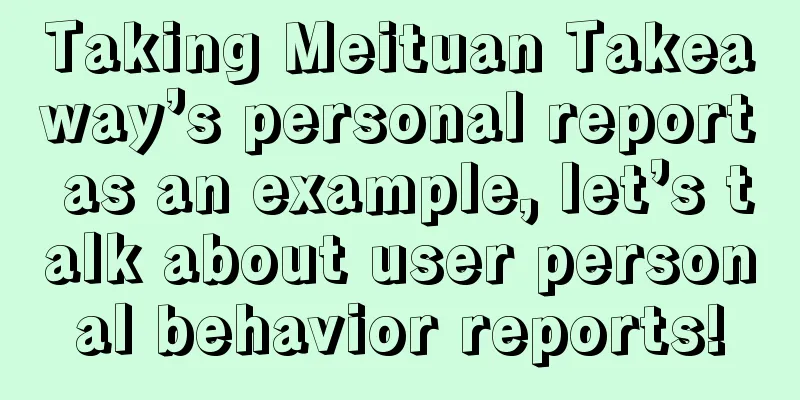iOS 9 Adaptation Tutorial Series

|
This article is a contribution article, author: ChenYilong (https://github.com/ChenYilong/iOS9AdaptationTips) Demo1_iOS9 network adaptation_Switch to more secure HTTPS iOS9 changes all http requests to https: Network requests sent by iOS9 system will all use TLS 1.2 SSL. The purpose of using TLS 1.2 protocol is to enforce enhanced data access security, and related network requests under the system Foundation framework will no longer use unsafe network protocols such as Http by default, but use TLS 1.2 by default. Therefore, the server needs to be updated to parse the relevant data. If not updated, it can be declared in Info.plist to fall back to unsafe network requests. Before the discussion, as usual, let's talk about the issues that iOS programmers are most concerned about: What does it have to do with me? Do you need me to work overtime?! First, let's take a look at the industry's comments on Apple's approach: This was a discussion on a social app. It seems that there are both complaints and affirmations in the industry. Conclusion: It has a lot to do with you, work overtime, young man! Let's get back to the topic [serious face], let's formally discuss WHAT, WHY, HOW:
WHAT (What is SSL/TLS? How does it relate to HTTP and HTTPS) As usual, let me start with the conclusion:
TLS is the new nickname for SSL. For example: "TLS1.0" is to "SSL3.1" as "2015 AD" is to "104 of the Republic of China", or "one kilogram" is to "one kilogram", or "half a catty" is to "eight taels": different names, but the same meaning. The subsequent iterations of SSL 3.0 were renamed TLS 1.0. That is:
So they are the same thing, and we often simply see the term "SSL/TLS". The most commonly used ones are the following:
So why is the title "Use HTTPS" and doesn't mention anything about SSL and TLS? To understand this, look at the next formula:
To use an analogy: if the original HTTP is a plastic water pipe that is easily punctured, then the newly designed HTTPS is like wrapping a metal water pipe around the original plastic water pipe. First, the original plastic water pipe still works; second, after being reinforced with metal, it is not easy to be punctured. Currently, the most widely used is TLS 1.0, followed by SSL 3.0. However, mainstream browsers have already implemented support for TLS 1.2. Apple allows you to use SSL/TLS protocol for HTTP, which means you can switch from HTTP to HTTPS #p# WHY (Can't the old HTTP be used? Why use SSL/TLS? Are you so idle?! Is Apple being anti-human again?) HTTP communication without SSL/TLS is unencrypted communication! All information is transmitted in plain text, which brings three major risks:
The SSL/TLS protocol is designed to address these three risks, hoping to achieve:
HOW (How to adapt? --- Just a quick question: How long will it take to work overtime?) As stated at the beginning of the article: TLS 1.2 protocol enforces enhanced data access security. Network requests under the Foundation framework will no longer use unsafe network protocols such as Http by default, but will use TLS 1.2 by default. The server therefore needs to be updated to parse relevant data. If not updated, you can declare in Info.plist to fall back to unsafe network requests. Solution 1: Immediately upgrade the company's server to use TLS 1.2 Solution 2: Although Apple does not recommend it, you can declare in Info.plist that falling back to insecure network requests will still allow the App to access the specified http, or even any http. See the gif for specific steps and Demo1 for example As Apple's official documentation says: The XML source code in the Info.plist configuration is as follows: The above is a more rigorous approach, which specifies which specific HTTPs can be accessed. Of course, there are also violent approaches: completely fall back to insecure HTTP network requests, and can make any HTTP request, for example, if you are developing a browser app, or you want to be lazy, or the backend wants to be lazy, or the company does not upgrade the server for you... Disclaimer: Currently, Apple's official documentation does not mention how to configure in Info.plist. I will pay close attention to the official documentation and update this article if it is mentioned. #p# Demo2_iOS9 new features_More flexible background positioning Demo: GitHub address [There is both bad news and good news about iOS9's positioning] Bad news: If you don't support iOS9, you can't secretly position in the background (without the blue bar, see the picture)! Good news: This scenario will be allowed: multiple location managers in the same app: some can only position in the foreground, and others can position in the background, and you can turn on or off the background positioning of a specific location manager at any time. If you do not request background location permission, you can still locate in the background, but there will be a blue bar: How to secretly locate in the background: Request background location permission:
But if you try this approach without configuring Info.plist, your app will 100% crash with the following error:
To configure Info.plist as follows: The corresponding Info.plist XML source code is: Bitcode (Popular explanation: online version of Android ART mode) In the future, Watch apps must include Bitcode. iOS does not require it, but Xcode7 will enable Bitcode by default. How to adapt? Method 1: Update the library to include Bitcode, otherwise the following warning will appear; Method 2: Turn off Bitcode, as shown in the figure below For more information, please visit Apple's official documentation on bitcode and WWDC 2015 Session 102: "Platforms State of the Union"
#p# Enterprise-level distribution Before iOS9, enterprise-level distribution was very convenient: click on the App and a “Trust button” will appear. After iOS9, enterprise-level ipa packages will be treated the same as dmg installation packages on Mac: they cannot be installed by default, and the "Trust button" will no longer appear. The user must make the settings shown in the gif (related Demo: https://github.com/ChenYilong/iOS9AdaptationTips/ ) URL scheme In iOS 9, if you use URL scheme, you must whitelist the URL scheme you want to call externally in "Info.plist", otherwise it cannot be used. The key is called LSApplicationQueriesSchemes, and the key value is
Recommend a blog: http://awkwardhare.com/post/121196006730/quick-take-on-ios-9-url-scheme-changes The most critical parts are as follows:
For more information, please go to: WWDC 2015 Session 703: "Privacy and Your App" at around 30:18 iPad adapts Slide Over and Split View [iPad adapts Slide Over and Split View] If you want to adapt to the multi-tasking feature, the only suggestion is to abandon pure code and use storyboard and xib instead. This is the case for all Apple WWDC demos:
|
<<: How to improve the style of APP interface in details?
>>: One Year Notes for iOS Programmers - Learning
Recommend
iOS componentization is not just the architect's job
iOS componentization was once a hot topic in the ...
Android version split, where should developers go?
Recently, Google released a distribution chart of...
What should I do if my brand becomes “old”?
We often lament that the world has changed too fa...
4 tips to simplify your IT programmer's work life
If you could simplify your life—doing fewer borin...
How does Baidu bidding ocpc control traffic?
After the Baidu bidding OCPC account enters the s...
How I got over 50,000 beautiful women users, revealing the inner world of beautiful women
Many, many years ago, the first section I took ov...
Dear business elites, developing an iOS app is not that easy
[[143163]] Let’s get straight to the point: How m...
12 Growth Strategies for K12 Online Education
As online education giants and unicorn institutio...
4 ideas to find seed users for product launch!
When a product is in the early stages of operatio...
How to play with community fan membership? How to realize commercialization of community operations?
What is an Internet community ? An Internet commu...
Four weapons for operating community products: vests, topics, points, and messages
We said that to design a community you need to: f...
Is it expensive to produce the Hengyang Metallurgical Mini Program? Hengyang Metallurgical Mini Program Production Cost and Process
How much does it cost to produce the Hengyang Met...
Discussing the editing of game interactive texts from the perspective of six steps
It's difficult to write #p#. last_monster_mas...
In-depth analysis of Douyin e-commerce algorithm
Douyin e-commerce is like a game, and the algorit...
5 major APP overseas promotion channels, use them!
For most mobile application APP teams, designing ...









